#Atomic Bomb 💣
Text

Tina Cordova and her mother, Rosalie, relax at Bonito Lake, New Mexico, in 1960. Cordova says the lake—which lies within the estimated radioactive fallout zone—was a water source for area towns, including Carrizozo, Alamogordo, and Ruidoso. Courtesy of Anastacio and Rosalie Cordova
U.S. Lawmakers Move Urgently to Recognize Survivors of the First Atomic Bomb Test
The 1945 Trinity test produced heat 10,000 times greater than the surface of the sun and spread fallout across the country.
— By Lesley M.M. Blume | Published September 21, 2021 | July 29th, 2023
Barbara Kent joined Carmadean’s dance camp in the desert near Ruidoso, New Mexico, in the summer of 1945. During the day, she and nine other girls learned tap and ballet. At night, they slept in a cabin by a river. Early in the morning on July 16, 1945, Kent says that she —then 13—and the other campers were jolted out of their bunk beds by what felt like an enormous explosion nearby. Their dance instructor rushed the girls outside, worried that a heater on the premises might have burst.
“We were all just shocked … and then, all of a sudden, there was this big cloud overhead, and lights in the sky,” Kent recalls. “It even hurt our eyes when we looked up. The whole sky turned strange. It was as if the sun came out tremendous.”
A few hours later, she says, white flakes began to fall from above. Excited, the girls put on their bathing suits and, amid the flurries, began playing in the river. “We were grabbing all of this white, which we thought was snow, and we were putting it all over our faces,” Kent says. “But the strange thing, instead of being cold like snow, it was hot. And we all thought, ‘Well, the reason it’s hot is because it’s summer.’ We were just 13 years old.”
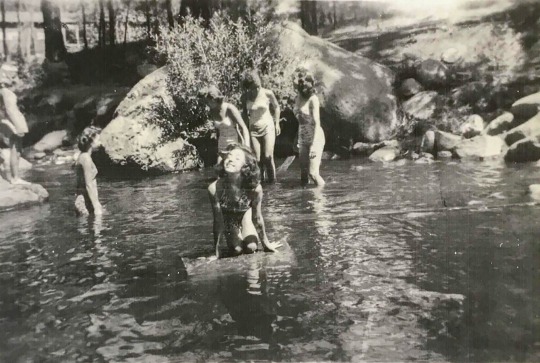
Thirteen-year-old Barbara Kent (center) and her fellow campers play in a river near Ruidoso, New Mexico, on July 16, 1945, in the hours after the bomb’s detonation. Fallout flakes drifted down that day and for days afterward. “We thought [it] was snow," Kent says. “But the strange thing, instead of being cold like snow, it was hot." Courtesy of Barbara Kent
The flakes were fallout from the Manhattan Project’s Trinity test, the world’s first atomic bomb detonation. It took place at 5:29 a.m. local time atop a hundred-foot steel tower 40 miles away at the Alamogordo Bombing and Gunnery Range, in Jornada del Muerto valley.
The site had been selected in part for its supposed isolation. In reality, thousands of people were within a 40-mile radius, some as close as 12 miles away. Yet all those living near the bomb site weren't warned that the test would take place. Nor were they evacuated beforehand or afterward, even as radioactive fallout continued to drop for days.
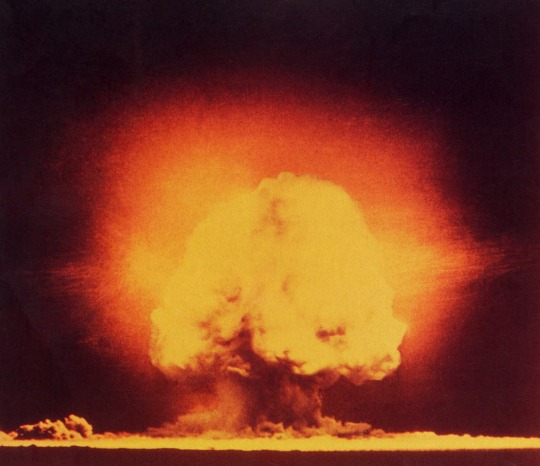
The Trinity test took place at 5:29 a.m. local time on July 16, 1945. It was three to five times more powerful than its creators had anticipated, producing heat 10,000 times greater than the surface of the sun. The explosion cloud may have reached a height of 70,000 feet. Photograph By Science History Images/ Alamy
In 1990, the U.S. Congress passed the Radiation Exposure Compensation Act (RECA), which has since dispensed over two billion dollars to more than 45,000 nuclear workers and “downwinders”—a term describing people who have lived near nuclear test sites conducted since World War II and may have been exposed to deadly radioactive fallout.

But those exposed during the Trinity test and its aftermath have never been eligible.
For years, Senator Ben Ray Lujan, a Democrat from New Mexico, and other members of Congress have attempted to amend RECA, due to expire on July 11, 2022. In light of this looming deadline, on September 22, Lujan, along with Senator Mike Crapo, Republican of Idaho, and eight co-sponsors introduced Senate bill S. 2798 to extend RECA and expand it to make those in the estimated Trinity fallout zone eligible, as well as other downwinder communities in Colorado, Idaho, and Montana. The proposed legislation also would expand eligibility for people who have worked in uranium mines and mills or transported uranium ore. Also on September 22, Representative Teresa Leger Fernandez and 15 co-sponsors introduced a similar bill, H.R. 5338, in the House.

The plutonium bomb—nicknamed the Gadget—was set atop this hundred-foot steel tower, which vaporized in the explosion. "From the Trinity test,” a 2010 Centers for Disease Control and Prevention report noted, “it was learned that detonating a nuclear explosive device [that] close to the ground increases the radioactive fallout from the event." Photograph Via CORBIS/Getty
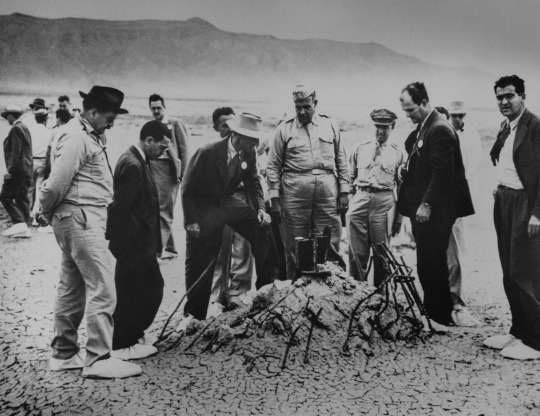
Manhattan Project leaders—including General Leslie Groves (center) and, to his right, physicist J. Robert Oppenheimer—scrutinize the remnants of the tower at ground zero. Upon seeing the detonation, Oppenheimer thought of a line from the Bhagavad Gita: "Now I am become Death, the destroyer of worlds." Photograph Via CORBIS/Getty
“The fact that there had not been a recognition of the impact of the very first atomic detonation in New Mexico was really simply wrong,” says Representative Teresa Leger Fernandez, a Democrat from New Mexico and co-sponsor of the House bill. “We hear their voices, we see their pain, and we must act.”
This is an especially urgent and consequential moment for those living in Trinity’s estimated fallout zone—some of whom have been waiting 76 years to be acknowledged. “We have been denied justice long enough,” says Bernice Gutierrez, who was a newborn when the bomb exploded. Her family lived in Carrizozo, about 50 miles from the blast site. “It’s not like we haven’t given our all to our country. What more can you give?”
‘A Very Serious Hazard’
The blast from the plutonium implosion device, nicknamed the Gadget, produced heat 10,000 times greater than the surface of the sun and was significantly more powerful than its creators had expected. It carried aloft hundreds of tons of irradiated soil and sent a mushroom cloud up to 70,000 feet in the sky. In this experimental atomic detonation, only three of the 13 pounds of plutonium at the bomb’s center underwent fission. The rest dispersed in the fallout cloud.
A tiny fraction of that three pounds of plutonium—about the weight of a raisin—was enough to release “three times the destructive force of the largest conventional bomb used in World War II,” says Robert Alvarez, associate fellow at the Institute of Policy Studies and former senior policy advisor to the U.S. Secretary of Energy. (The Gadget released an explosive force equivalent to about 21,000 tons of TNT.)
Right after detonation, the cloud divided into three parts. One part drifted east, another to the west and northwest, and the rest to the northeast, across a region a hundred miles long and 30 miles wide, “dropping its trail of fission products” the entire way, according to a 2010 report by the Centers for Disease Control and Prevention (CDC). The fallout eventually spread over thousands of square miles and was detected as far away as Rochester, New York.
Nineteen counties in New Mexico were in the downwind area, including 78 towns and cities, and dozens of ranches and pueblos. Radiation levels near homes in some “hot spots” reached levels “almost 10,000 times what is currently allowed in public areas,” according to the CDC.
“There is still a tremendous quantity of radioactive dust floating in the air,” wrote Stafford Warren to U.S. Army General Leslie R. Groves, head of the Manhattan Project, five days after the blast. Warren, the project’s chief medical officer, added that “a very serious [radiation] hazard” existed within a 2,700-square-mile area downwind of the test.
He also advised that future atomic tests be done only where there were no people within a radius of 150 miles. (Nearly half a million people in New Mexico, Texas, and Mexico lived within a 150-mile radius of the Trinity test.)
“We didn’t know what the hell we were doing,” Louis Hempelmann—the director of the Los Alamos Health Group, a team tasked with managing radiation within the Manhattan Project—reflected in a 1986 interview uncovered by sociologist James L. Nolan, Jr., in his book Atomic Doctors. “Nobody had had any experience like this before, and we were just hoping that the situation wouldn’t get terribly sticky.”
The leaders of the Manhattan Project knew that civilians had been “probably overexposed,” Hempelmann said. “But they couldn’t prove it and we couldn’t prove it. So we just assumed that we got away with it.”
Many civilians living within the estimated fallout zone were unwittingly exposed and sickened. According to Alvarez, even minute quantities of plutonium can inflict disease. “Particles of plutonium less than a few microns in diameter can penetrate deep in the lungs and lymph nodes and can also be deposited via the bloodstream in the liver, on bone surfaces, and in other organs,” he says. “If inhaled, extremely small amounts can lead to cancer.”
How is it, asks Senator Lujan, that RECA covered people living downwind of the Nevada Test Site but left out “the community where the first nuclear bomb was tested on American soil? There’s not been a good answer given to me nor to the downwinders in New Mexico. There’s no question of the exposure that resulted from the Trinity test.”
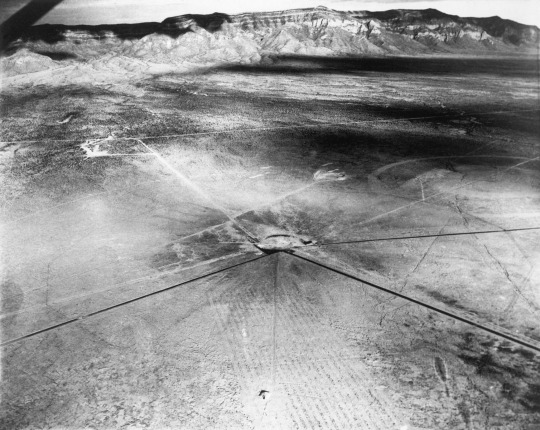
The explosion seared the desert sand surrounding the tower into a green, glass-like substance, named Trinitite. Photograph Via Bettmann/Getty
Something Felt Terribly Awry
Several people living near the test site later reported that they thought they were experiencing the end of the world. The strange, snowlike substance that fell from the sky for days coated everything: orchards, gardens, livestock, as well as cisterns, ponds, and rivers—the main sources of drinking water because local groundwater was “unsuitable for human consumption,” according to the 2010 CDC report.
One family in Oscuro, New Mexico, about 45 miles from the site, hung wet bedsheets in their windows against the fallout. They felt that something was terribly awry when their chickens and their dog died. Thirty miles away from ground zero, along Chupadera Mesa, burns appeared on the hides of cattle, whose fur eventually grew back gray and white in the burned patches.
A health care provider in Roswell, a hundred miles away, noted a surge in infant deaths there—35 in August 1945 alone. When she wrote to Warren, stating her concerns, his medical assistant replied that there were no “pertinent data” and assured her that “the safety and health of the people at large is not in any way endangered.”
“They Lied To Us. I Didn’t Learn The Truth Until Years Later.” — BatbaraKent, Trinity Test Survivor
For General Groves, getting the bomb ready—in secrecy—for wartime use had trumped all other considerations, including public safety.
Yet he realized that a blast whose flash was seen in at least three states and two countries could not be wholly concealed. He ordered the commanding officer of the Alamogordo Air Base to feed a cover story to the Associated Press that “a remotely located ammunition magazine containing a considerable amount of high explosives and pyrotechnics exploded.” There had been, the report went on, “no loss of life or injury.” Local newspapers reprinted the announcement without challenge.
Barbara Kent recalls that the day after the explosion, her camp’s dance instructor took the girls into Ruidoso, where government officials were to make an announcement about the source of the blast.
“It was so crowded downtown—everyone was shoulder to shoulder,” Kent says. “What they told us—there was an explosion at a dump. They said, ‘No one worry about anything, everything’s fine, just go along with your own business.’ Everyone was confused. Some people believed it, but some people thought they couldn’t imagine that a dump explosion would do this." She continues: "They lied to us. I didn’t learn the truth until years later.”
As time passed, Kent says she began to hear disturbing reports that her fellow campers were falling ill. By the time she turned 30, she says, “I was the only survivor of all the girls at that camp.” She adds that she has suffered from lifelong illnesses: She had to have her thyroid removed and has survived several forms of cancer, including endometrial cancer and “all kinds of skin cancers.”
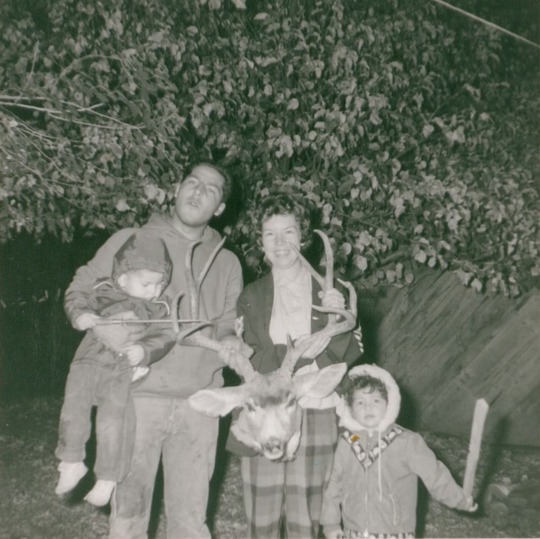
In this photograph from 1962, three-year-old Tina Cordova (bottom right) is pictured with her father, Anastacio (holding her baby brother, Matthew), and mother Rosalie. The young family lived in Tularosa, about 40 miles from the blast site. Everything they ate, Tina recalls, “was raised or grown or hunted," adding that the bomb’s “ash got everywhere, in the soil, in the water—everything was contaminated." She says her mother and father developed cancers, and she was diagnosed with thyroid cancer when she was 39. Courtesy of Anastacio and Rosalie Cordova
Tina Cordova is a fifth-generation resident of Tularosa, about 40 miles from the blast site. Thanks to an extensive ditch system in the area, the town was an oasis in the desert, and Cordova’s family’s home, like many others, had an orchard and garden.
“You could literally go out into your yard in the summer and eat peaches, apricots, cherries, figs, dates, pecans, walnuts—everything you could think of,” she says. Local people harvested and canned their fruit and collected rainwater for drinking from rooftop cisterns. Milk came from local dairies. People made their own butter and butchered farmyard animals or hunted wild animals for meat, including deer, quail, rabbit, and pheasant.
“Everything that people were consuming in 1945 was contaminated,” Cordova says. “But they didn’t know [the fallout was] dangerous. They went about their lives.”
After the test, she says, health problems began to plague her family, all of whom lived in and around Tularosa. According to Cordova, two of her great-grandfathers died of stomach cancer, and both of her grandmothers developed cancer. Two aunts had breast cancer, and one died from it. A cousin developed a brain tumor. Her mother had mouth cancer, and her sister has skin cancer. Her father, who was four at the time of the blast, suffered from various cancers, including prostate cancer and tongue cancer. Doctors had to remove part of his tongue and his lymph nodes. The cancer eventually spread to his neck and became inoperable. Cordova says he weighed about 125 pounds at his death in 2013 at the age of 71. She says that she herself was diagnosed with thyroid cancer in 1997, when she was 39.
‘When Are They Going To Hold Our Government Accountable?’
After the U.S. leveled Hiroshima with a uranium bomb on August 6, 1945, the secret history of the creation of atomic weapons was released and widely publicized. Many New Mexicans now realized that the blast that had shattered their windows and blanketed their homes in warm ash was not, after all, an ammunition dump explosion. Although they still hadn't been informed by the government about the nature of that ash or monitored for adverse health effects, they were encouraged to be proud of the part they’d unknowingly played in bringing about the dramatic new atomic age.
“When I was a child, the government fed us propaganda about how much pride we should take in the part we played in ending World War Two,” Cordova says. “We still did not know what that meant from a health consequence perspective. Our mom actually took us to the [Trinity] site for a picnic. We brought home as much Trinitite as we could and played with it.” (The Trinity Site is now a National Historic Landmark, open to visitors twice a year, and anyone can go online and buy radioactive fragments of Trinitite—a green glass created from sand and other materials that melted in the immediate blast zone.)

The U.S. Army erected this monument at ground zero in 1965. Ten years later, the National Park Service designated Trinity Site as a National Historic Landmark. It’s open to visitors twice a year, on the first Saturdays in April and October. Photograph By Tony Korody, SYGMA Via Getty
In 2004, Cordova read a letter from another Tularosa resident, Fred Tyler, to the editor of a local newspaper. She says that the letter changed her life. “He said, ‘When are they going to hold our government accountable for the damage they did to us?’ ” Cordova says. “I called him and said, ‘I feel the same way you do. It’s time to start an organization to more fully push the government about this issue.’ ”
In 2005, Cordova and Tyler founded the Tularosa Basin Downwinders Consortium (TBDC) as an advocacy organization for Trinity test downwinders.
At that time, she recalls, they weren’t aware that the Radiation Exposure Compensation Act had been in place for 15 years and already had provided onetime, $50,000 compensation to other downwinders who “may have developed cancer or other specified diseases after being exposed to radiation from atomic weapons testing or uranium mining, milling, or transporting.” Downwinder eligibility initially was limited to those within specified areas around the Nevada Test Site, 65 miles north of Las Vegas, where a hundred aboveground tests were conducted before a moratorium on atomic testing took effect in 1992.
In 2000, an amendment to RECA expanded eligibility to include some uranium miners and millers in New Mexico. Military and government workers who were “on-site participants” in the Trinity test were also eligible for compensation, but civilian downwinders remained ineligible.
Cordova, like Senator Lujan, says she has “never been able to get a straight answer” about why civilian downwinders were excluded from the legislation: “Even from people who were serving in Congress at the time, I’ve been told, ‘Well, no one was connecting the dots that anybody was harmed.’ ”
Bill Richardson—a Democrat who served as New Mexico’s governor from 2003 to 2011 and was a representative for the state’s Third Congressional District in 1990 when RECA was enacted—says, “I don’t think there was opposition [to their inclusion], just perhaps a lack of awareness. I didn’t know about their claims until I started reading about it when I was governor, and I was sympathetic.”
To raise awareness, Cordova and her colleagues at the consortium began to gather testimonies from and distribute health surveys to downwinders who were alive at the time of the Trinity test, along with their descendants who have lived in areas surrounding the test site. To date, the consortium has collected more than 1,000 surveys, and Cordova says that 100 percent of those questioned describe adverse health conditions—from thyroid disease to brain cancer—that can result from radiation exposure. Often participants describe similar cancers that have ravaged many family members over several generations.
‘A Now-or-Never Moment’
Cordova describes this effort to extend and expand RECA as a “now-or-never moment.” Senator Mike Crapo, an Idaho Republican and co-sponsor of the Senate bill, says there’s a “dire need for Congress to extend RECA … [and] to include victims in states across the West.”
“It is beyond time for the federal government to right a past wrong that caused harm to countless innocent Americans,” he wrote in a letter on March 24, 2021, to the chairman and members of the House Judiciary Committee.
“We Hear Their Voices, We See Their Pain, and We Must Act.” — TeresaLeger Fernandez, Representative to Congress, New Mexico
“When [RECA] was first introduced, no one considered the impact on the first downwinders,” Representative Fernandez says. “But we are in a place now where we recognize an injustice when we see it.” Her family lived in San Miguel and Guadalupe Counties in New Mexico, areas of potential exposure. She says her mother and sister—both nonsmokers—died of lung cancer. Her father died of esophageal cancer, she says, and her grandmother, who grew up near the Trinity site, died of leukemia.
Fernandez and Lujan say they’re also going to push for new epidemiological and environmental studies of the Trinity test’s aftermath and possible long-term effects.
Assessing Trinity’s exact “fingerprint” based on current fallout levels is “complicated and subject to large uncertainties,” says health physicist Joseph Shonka, co-author of the 2010 CDC report. He notes that residents of New Mexico have higher positive plutonium levels in their tissues than residents of any other state but says that tracing those levels back specifically to Trinity fallout might be difficult.
New Mexicans also may have internalized plutonium from various additional sources, he says, including general global fallout, releases from New Mexico’s Los Alamos plutonium operations, and fallout that drifted down from Nevada’s Test Site. The CDC recommended prioritizing Trinity’s aftermath for future studies.
Last year, the National Cancer Institute (NCI) released its findings from a nearly seven-year study of the Trinity nuclear test. The study’s lead investigator, Steven Simon, calls it the “most comprehensive study conducted on the Trinity test and its possible ramifications for cancer risks in the estimated fallout area.”
The researchers concluded that up to a thousand people may have developed cancer from the Trinity test fallout and that “only small geographic areas immediately downwind to the northeast received exposures of any significance.” They also said that the “plutonium deposited as a result of the Trinity test was unlikely to have resulted in significant health risks to the downwind population.”
The researchers also acknowledged their study’s limitations. Calculating exposure for those alive at the time of the detonation is “complex and is subject to uncertainties,” Simon explains, “because all of the needed data is not available."
Shonka says the new NCI study “failed to address early fallout adequately.” He says he questions some of the methodology and is preparing a counter-article addressing what he says are inconsistencies with previous findings. Other critics of the NCI study say it doesn’t address ongoing family cancer clusters and the reported 1945 spike in infant deaths in the region, documented in a 2019 paper in the Bulletin of the Atomic Scientists, co-authored by Robert Alvarez.
The NCI responds that its researchers focused on exposures received among “New Mexico residents alive at the time of the test,” and that they didn’t investigate the infant mortality because it was “not a cancer effect.”
Senator Lujan calls the NCI study “limited” and says that he wants to “make sure that there’s accurate data that truly is looking at the exposure that families face.”
“How can someone say that families in proximity to a nuclear blast were not exposed?” he asks. “It goes against everything that I’ve learned and data sets that I’ve seen from different parts of the world where this has happened, whether it’s been from meltdown of nuclear energy generation facilities or where weapons were deployed.”
Lujan continues, “People died as a result of the Trinity test—that’s a fact. People are still suffering—that’s a fact. The U.S. needs to come forward to address this liability, this wrong.”
Cordova says she and her community will be closely watching the RECA bills’ progress. The new legislation asks to expand compensation for individuals from $50,000 to $150,000. But beyond financial restitution, Cordova says, they’re also hoping simply for a government apology.
“We’ve never had an opportunity to live normal lives,” she says. “They can never say that they didn’t know ahead of time that radiation was harmful or that there was going to be fallout. We don’t ask if we’re going to get cancer; we ask when it’s going to be our turn. We are the forgotten collateral damage.”
— Lesley M. M. Blume is a New York Times best-selling historian, journalist, and author of Fallout: The Hiroshima Cover-up and the Reporter Who Revealed It to the World.
#United States 🇺🇸#US Lawmakers#Atomic Bomb 💣#Survivors#Lesley M.M. Blume#Barbara Kent#Ruidoso New Mexico#Manhattan Project’s Trinity Test#Alamogordo Bombing and Gunnery Range#Jornada del Muerto Valley#U.S. Congress#Radiation Exposure Compensation Act (RECA)#Two Billion Dollars 💵#Downwinders#New Mexico’s Senator Ben Ray Lujan (D)#Senator Mike Crapo (R—Idaho)#Rep. Teresa Leger Fernandez#Colorado Idaho and Montana#General Leslie Groves#J. Robert Oppenheimer#Serious Hazard#Louis Hempelmann#Los Alamos Health Group#Sociologist James L. Nolan Jr.#Terribly Awry#Government Accountable#Trinity Site#National Historic Landmark#Bill Richardson Governor New Mexico (D)
2 notes
·
View notes
Text
Nobody:
My brain: Atom bomb 💣 Baby👶 little atom⚛️ Bomb 🤯 I want her 💃 in my wig💇♀️ wam 💥 she’s just the way 👉👉👉 I want her to be 💕💗😱 A million 💯💯💯 times hotter 🔥🔥 than T N T 🧨🧨🧨
668 notes
·
View notes
Text
Sorry😔 Satan👹, but I can't do this evil 😈 on my own🤷
I haven't left 🏃😰the house🏠 in nearly thirty thousand🏚️🧓days🌇
I sent you 📩the image of a little yellow face🙁
To tell you 🗣️that I'm sad 😭about the emptiness 🫥🌫️that's all around me😵💫
And I can't stop 📵the ringing🔔📳 in your ears📢👂🙉
When 🕰️everything we love 💞becomes 🫠a picture📸 of a simulation👾🎮
It wakes me 🛌🥱in the middle of the night🌃🌙
I love you 😍like an atom bomb💣🤯💥, but I've become a cold 🥶 reactor⚛️❄️
106 notes
·
View notes
Text
ATOMIC BOMB!! 💣 💥
Amazing comic by @nutellapatella Dubbed by my friend @dtvarlux and edited by me! I love this comic one of my favorites :)
(YT link: https://youtu.be/8Gg1aQJOsdU )
115 notes
·
View notes
Text


Atom bomb babies ☢️⚛️💣
11 notes
·
View notes
Text


Hades ♥️🥹
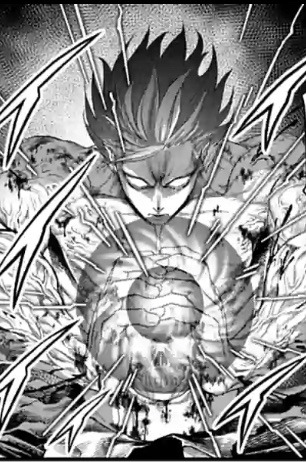
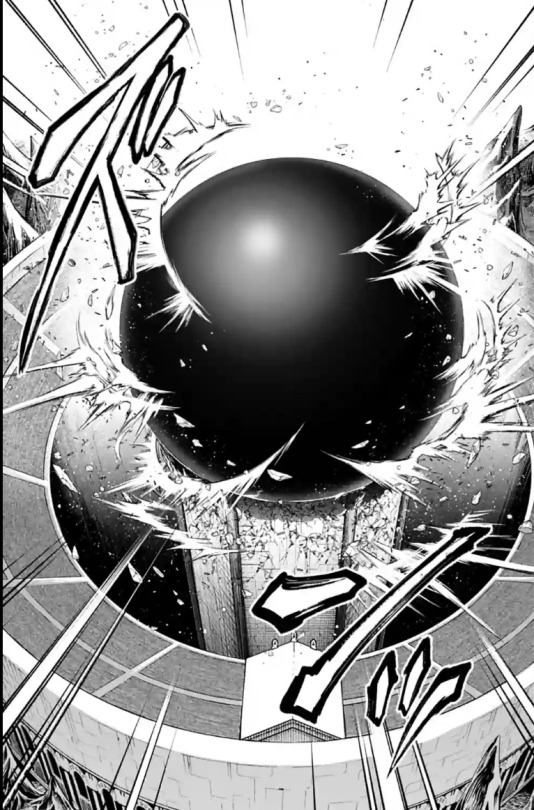
Beelzebub has his own atomic bomb 💣
69 notes
·
View notes
Text
Sorry Satan👺
But I can’t do this evil😈on my own🧍♂️
I haven’t left the house🏡in nearly 30,000 days📆
I sent ya the image of a little yellow face😀to tell you that I’m sad 😢about the emptiness🌫️that’s all around me
And I can’t stop the ringing🔔in your ears👂
When everything we love♥️becomes a picture🏞️of a simulation🖥️
It wakes me😴in the middle of the night🌙
I love you♥️like an atom bomb💣☢️but I’ve become a cold reactor❄️⚠️
#everything everything#ee#everything everything band#e e#e_e_#cold reactor#mountainhead#new release#single#inspired by another post#but I can’t remember where it is???
10 notes
·
View notes
Text
(Me personally, I only want to see Barbie, but the thought of doing a double feature is really tempting....) 💖🌸🌷🌸💖
#barbie movie#barbie 2023#oppenheimer#barbie#barbenheimer#margot robbie#greta gerwig#cillian murphy#oppenbarbie#ryan gosling#kenergy
13 notes
·
View notes
Text
I think ur dad is a terrorist because ur a atom bomb 💣
1 note
·
View note
Text
🎬💥 OP-pen-heimer 💥🎬
So, I just watched Oppenheimer... or was it Oppaheimer? 🤔 Either way, it's a movie that'll have your brain doing backflips while you question the very fabric of existence! 💥🌀 Imagine this: a dude named Oppenheimer, or was it Oompaloompa? 🍫🤷♂️ Anyway, he's like the mad scientist of the 1940s, cooking up some seriously explosive experiments in his lab 🧪💣. But get this: instead of test tubes, he's juggling atoms like they're flaming hot potatoes! 🔥🥔 And there's this whole squad of scientists, like a brainiac boy band, all trying to out-nerd each other. 🤓🎸 But hold onto your seat because things get wilder than a kangaroo on a trampoline! 🦘🤸♂️ Suddenly, they're dropping bombs bigger than your mom's Sunday meatloaf 😱🍽️, and Oppenheimer's like, "I am become Death, destroyer of worlds." 💀🌎 But wait, is he talking about his latest mixtape or something else entirely? 🎤🔥 And just when you think you've got it all figured out, BOOM! Mind blown like a confetti cannon at a clown convention! 🎉🤯 So yeah, Oppenheimer: the movie that makes you question everything you thought you knew...including how to spell its name! 🤔🎬💥
0 notes
Text
The True History of Einstein's Role in Developing The Atomic Bomb
The Legendary Physicist Urged the U.S. to Build the Devastating Weapon During World War II—and Was Haunted by the Consequences. “I Did Not See Any Other Way Out.”
— By Erin Blakemore | February 21, 2024

A Mushroom Cloud Towers Over Nagasaki After the Detonation of an Atomic Bomb in 1945. Albert Einstein struggled with his role in the creation of the bomb and the devastation wrought by the U.S. bombing of Hiroshima and Nagasaki during World War II. Photograph By U.S Army Air Force Via Library of Congress
Albert Einstein is perhaps most famous for introducing the world to the equation E=mc2. In essence, he discovered that energy and mass are interchangeable, setting the stage for nuclear power—and atomic weapons.
His part in the drama of nuclear war may have ended there if not for a simple refrigerator.
In the 1920s, while living in Berlin, the physicist collaborated with Hungarian graduate assistant Leo Szilárd to develop and patent an energy-efficient fridge. While their design never went to market, the duo’s work ultimately embroiled Einstein—an avowed pacifist—in the race to create an atomic bomb during World War II.
Einstein would go on to argue vehemently to ban nuclear weapons worldwide in his later life, as he struggled with the deadly consequences of his scientific creation.
“His brilliance was also his downfall,” says National Geographic Explorer Ari Beser. “The revolution that came with the splitting of the atom requires a moral one as well.”
Einstein's Letter To Roosevelt
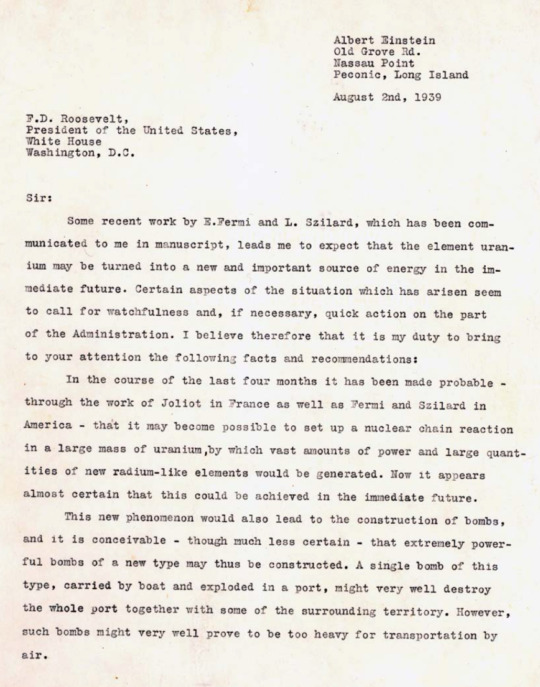

From the President’s Secretary’s Files. Einstein Letter. In the summer of 1939, a group of physicists, including several who hadfled Hitler’s Germany, met to discuss their fears of Germany developing a uranium-based weapon. It was decided that the best course of action was to immediately inform President Roosevelt of their concerns. Because Albert Einstein had a previous personal relationship with the Roosevelts and was internationally well-known for his expertise, a letter informing the President about the dangers of a nuclear chain reaction bomb was drafted for Einstein’s signature. This August 2, 1939 letter was personally delivered to the President on October 11, 1939 (the outbreak of the war intervened) by Alexander Sachs, a longtime economic adviser to FDR. After learning the letter’s contents, President Roosevelt told his military adviser General Edwin M. Watson, “This requires action.” The action FDR required would evolve into the Manhattan Project.
Even after Szilárd and Einstein ended their partnership over appliances, the two scientists stayed in touch.
In 1933, the same year Adolf Hitler became chancellor of Germany, Szilárd discovered the nuclear chain reaction—the process that unleashes the energy locked in atoms to create enormous explosions. And by 1939, he had became convinced that German scientists might be using current scientific developments to develop an atomic weapon.
So he approached his one-time colleague—then the world’s most famous scientist—and asked him to warn U.S. President Franklin Delano Roosevelt.
Szilárd visited Einstein in New York with two fellow refugees, Hungarian physicists Edward Teller and Eugene Wigner. When they told him about the possibility of a nuclear chain reaction, Einstein was shocked at the danger posed by his 1905 special theory of relativity.
“He certainly was not thinking about this theory as a weapon,” says Cynthia Kelly, president of the Atomic Heritage Foundation, a nonprofit organization she founded to preserve and interpret the Manhattan Project and its broader legacy. But “he quickly got the concept.”
Together with the other scientists, Einstein drafted a letter to Roosevelt that warned of what might happen if Nazi scientists beat the United States to an atom bomb.
“It appears almost certain that [a nuclear chain reaction] could be achieved in the immediate future,” he wrote, sounding the alarm on “extremely powerful bombs of a new type,” and advising that Roosevelt fund an initiative to research atomic energy.
Roosevelt took the warning seriously. On October 21, 1939, two months after receiving the letter and just days after Germany’s invasion of Poland, the Roosevelt-appointed Advisory Committee on Uranium met for the first time. It was the forerunner of the Manhattan Project, the top-secret government project that eventually invented a working atom bomb.
A Troubled Legacy
The committee was only given $6,000 in funding, so Einstein continued writing to the president, assisted by Szilárd, who wrote large portions of the letters. One letter even warned that Szilárd would publish key nuclear findings in a scientific journal if the initiative was not better funded.
In this way, Einstein helped spark the Manhattan Project, says Kelley, but “his actual involvement was very marginal.” The FBI file on the outspoken scientist—who openly criticized racism, capitalism, and war—would eventually grow to over 1,800 pages.
“In view of his radical background,” the FBI wrote, “this office would not recommend the employment of Dr. Einstein on matters of a secret nature.” In the end, Einstein never received security clearance to work on the Manhattan Project.
Still, his name is forever connected to the weapon born of his greatest discovery. He was devastated by news of the Hiroshima bombing—and humiliated by a TIME cover from 1946 that showed him in front of a mushroom cloud emblazoned with his famous equation.
Though Einstein worked to warn the world about the perils of nuclear proliferation for the rest of his life, he struggled to make sense of his responsibility.
“He is the father” of the atom bomb, says Beser, who is the grandson of the only U.S. serviceman aboard both planes that carried the atomic bombs to Japan.
Beser uses his storytelling to illustrate the aftermath of nuclear weapons. For instance, he visited Auschwitz with a survivor from Nagasaki, who was astonished at the connections between the bomb, which killed or wounded hundreds of thousands of civilians, and one of history’s other horrors—the Holocaust.
“I was well aware of the dreadful danger for all mankind, if these experiments would succeed,” Einstein wrote of the bomb’s development in a Japanese magazine in 1952. “I did not see any other way out.”

For Beser, Einstein’s dilemma illustrates the contradictions of the human condition: “The splitting of the atom changed everything, except the way we think,” he laments.
#Atomic Bomb 💣#Albert Einstein#Development of the Bomb 💣#Einstein’s Role#President Franklin Delano Roosevelt#Hiroshima | Nagasaki | Japan 🇯🇵#War Criminal United States 🇺🇸
0 notes
Note
(Here Comes the Atomic Bomb💣 of asks) Sonic, if the Master Emerald can grant wishes, how come you didn't use it to wish Longclaw back from the dead? 👀
"Because she wouldn't want me to do that. Also, it's not mine to use. And it has a scary effect on you. I actually don't like to use it unless we absolutely HAVE to."
0 notes
Text

youtube
There is *a groundbreaking, 🆕⚛️ nuclear arms race happening RIGHT under your nose, in 2023, that is loaded with conflicts of interests.

youtube
DAC, "Direct Air Capture", is technology that HARDENS CO2 carbon emissions, removing them from air.
Why aren't Nations planting MORE 🌴 TREES?
Meanwhile, nuclear energy substitutes that don't pollute our atmosphere are being promoted.

youtube
youtube
Their upsides & downsides are *MANY. Among them:
1) Climate change activists are NOT in favor of DAC, feeling that it would encourage more pollution.
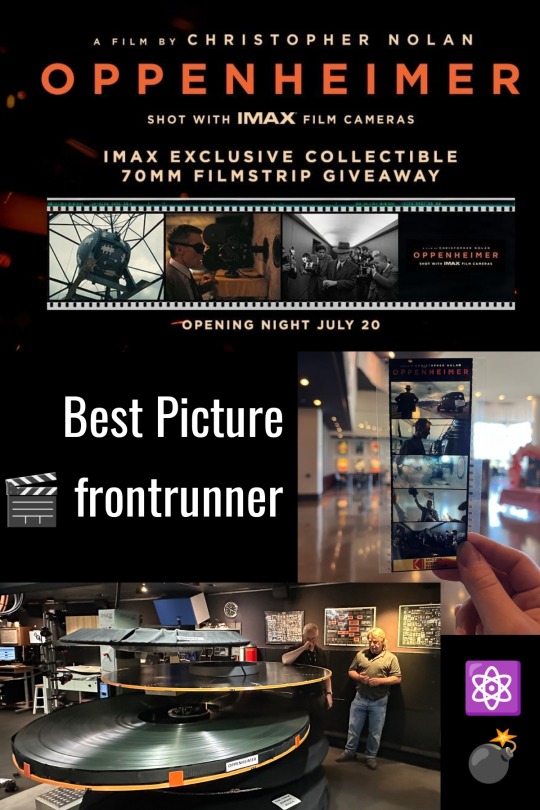
2) Nuclear 💥 FALLOUT.
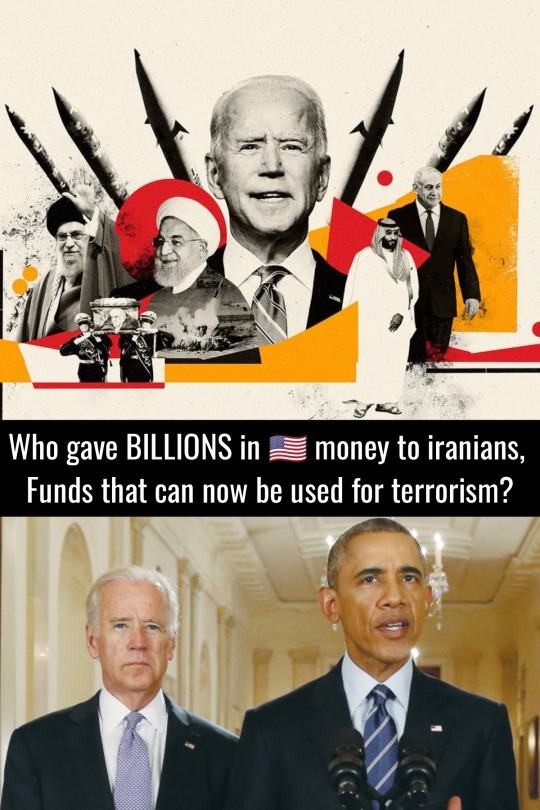
MUST 👁️👁️ stay FOCUSED:
3) As it relates to 👺 demonic operative "think tanks", global warming is already providing distraction that allows evil to operate with less detection.
MEANWHILE, a distraction:
demo-🐀 RATS are sending taxpayer money to LITERAL Ukrainian modern-day nazis.
SEE 👁️👁️ THIS ⬆️ ⚖️ POST.
People AREN'T "buying it"‼️
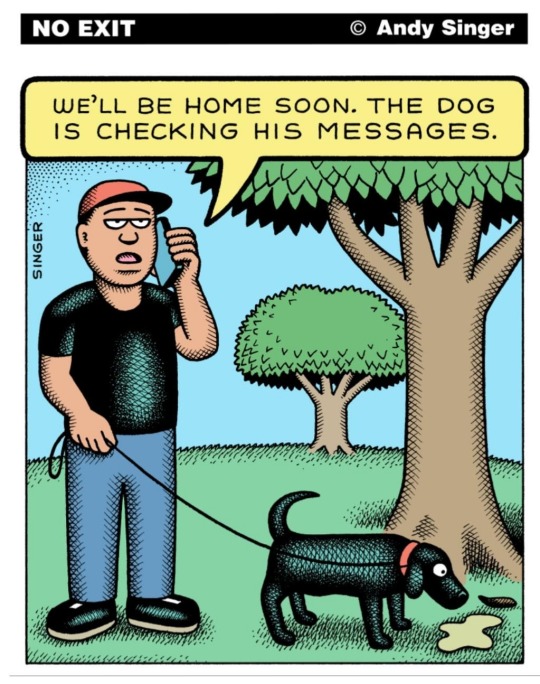
4) Moving everybody away from ⛽ gas can create major paralysis in the event of an EMP 💣 /electromagnetic pulse bomb.
Can U smell the bull 💩 crap?
1 note
·
View note
Text
Going to watch Oppenheimer with my grandparents 💥💣
I’m gonna make a summery of what happened so I can tell my Dad when I see him, which should be on Monday? I’m very excited to see this one too!!
So, when I add a new bit to this, my take of the movies events will be below the cut to avoid MAJOR spoilers.
The story of Oppenheimers viewpoint of all that went down shows how not only did he naïvely think that he was doing good, but he also had delved farther into things he should’ve separated from teaching.
The hints of his psychological state deteriorating the farther he went into his research, and the breaking point when he had given the speech after the atomic bomb had been set off; the dead animal, the crying people, the throbbing noise and moving walls, the flash of light and flaking skin of the woman.
The moment the weight of his actions, the success of the first atomic bomb going off, he had gone too far to do anything. His disassociation was frequent, his guilt and internal regret pulling hard in his head.
The questioning had brought out a much more obvious set of how much he did not like the situation. He had realized he made a weapon that would destroy humanity, and as he feared, it already had. The moment he set off the bombs to Hiroshima and Nagasaki, he had doomed the world.
And most importantly, he was and still is not a good person. Nobody he had worked with was. He never was. The movie did not try to make him a hero. They encapsulated the aftermath of what an atomic bomb being made and set off would do to the human psyche, and did not try to make him a victim. It was a beautifully horrific showcase of The Father of the Atomic Bomb.
I know, my view of the movie probably isn’t the most accurate, nor the most sensible. But I tried my best with a real review of a movie, and its damn fuckin’ good for a first.
#i also learned a lot about bombs#shit was crazy#shit was beautiful#shit was wild#oppenheimer#barbenheimer#oppenbarbie#xens rants
1 note
·
View note
Text
youtube
💣 Oppenheimer - कहानी जो आप नहीं जानते होंगे ? | The Father of Atomic Bomb | Fact Diary Tv Hindi
0 notes
Text
Kurse boomen - Durch Corona verlernt: Japaner lernen Lächeln | krone.at
No Atom bomb 💣 Hiroshima. lie
0 notes